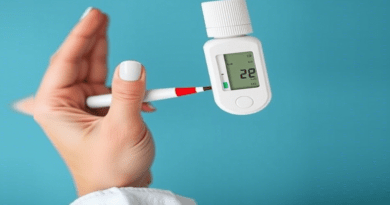Dengue Hemorrhagic Fever: Symptoms, Causes, and Prevention
Dengue fever is a mosquito-borne viral infection that has become a significant public health challenge worldwide in tropical and subtropical regions. The disease is characterized by flu-like symptoms. It can sometimes progress to severe dengue that is known as dengue hemorrhagic fever, which can be life-threatening. This article explores the nature of dengue fever, its symptoms, and dengue hemorrhagic fever. Causes and symptoms of the disease, and the measures one can take to prevent this potentially serious disease.
What is Hemorrhagic Dengue Fever?
It is a severe form of Dengue fever that is a viral infection caused by the dengue virus. It is transmitted to humans through the bites of infected female mosquitoes, primarily the Aedes aegypti and Aedes albopictus species. These mosquitoes are typically found in urban and semi-urban areas and are most active during the day, with peak biting periods early in the morning and before dusk.
The dengue virus belongs to the Flaviviridae family and has four distinct serotypes: DEN-1, DEN-2, DEN-3, and DEN-4. Infection with one serotype provides lifelong immunity to that serotype but only partial and temporary immunity to the others. Subsequent infections with different serotypes increase the risk of developing Dengue Hemorrhagic Fever.
Relevance
- About half of the world’s population is now at risk of dengue with an estimated 100–400 million infections occurring every year.
- Dengue is found in tropical and sub-tropical areas worldwide, mostly in urban and semi-urban areas
Symptoms of Dengue Fever
It can manifest as mild to severe disease. After an incubation period of 4 to 10 days following the bite of an infected mosquito, the illness begins abruptly and typically progresses through three phases: febrile, critical, and recovery.
1. Febrile Phase
The febrile phase lasts 2 to 7 days and is characterized by:
- High Fever: Sudden onset of high fever (up to 104°F or 40°C).
- Severe Headache: Intense pain behind the eyes.
- Muscle and Joint Pain: Severe muscle and joint pains, which is why dengue is sometimes called “breakbone fever.”
- Nausea and Vomiting: Common gastrointestinal symptoms.
- Rash: A maculopapular rash that may appear 2 to 5 days after the onset of fever.
- Fatigue and Weakness: General feelings of fatigue and malaise.
2. Critical Phase
In some patients, the disease progresses to a critical phase, usually around the time the fever begins to subside. This phase can last for 24 to 48 hours and may involve:
- Plasma Leakage: Blood plasma leaks through the capillary walls, which can lead to fluid accumulation in the chest and abdomen.
- Severe Abdominal Pain: Persistent abdominal pain and vomiting.
- Bleeding: Gum bleeding, nosebleeds, blood in vomit or stool (a sign of internal bleeding), and easy bruising.
- Organ Impairment: Liver enlargement and potential liver damage.
3. Recovery Phase
The recovery phase lasts 2 to 3 days. During this phase:
- Reabsorption of Leaked Fluid: The body reabsorbs the leaked fluid, and the symptoms gradually improve.
- Fatigue: General weakness and fatigue can persist for weeks.
Hemorrhagic Dengue Fever
Dengue hemorrhagic fever (DHF) or dengue shock syndrome (DSS), is a serious complication that can occur. It is characterized by:
- Severe Plasma Leakage: Leading to shock (DSS) and organ impairment.
- Severe Bleeding: Including severe gastrointestinal bleeding and heavy menstrual bleeding in women.
- Severe Organ Impairment: Affecting the liver, heart, or central nervous system.
Diagnosis and Treatment
Early and accurate diagnosis is important to manage dengue fever properly. Laboratory tests, such as the detection of dengue-specific antibodies or viral RNA, can confirm the diagnosis. Unfortunately, there is no specific antiviral treatment for dengue. Supportive care is the main line of treatment and includes:
- Fluid Replacement: To prevent dehydration and maintain adequate fluid balance, especially in the critical phase.
- Pain Relief: Use of analgesics such as acetaminophen (paracetamol) for fever and pain relief. Aspirin and non-steroidal anti-inflammatory drugs (NSAIDs) should be avoided due to the risk of bleeding.
- Close monitoring of vital signs, hematocrit levels, and platelet count.
Prevention
Preventing dengue involves controlling the mosquito population and preventing mosquito bites. Key preventive measures include:
- Eliminating Mosquito Breeding Sites: Removing standing water in containers, flower pots, and tires where mosquitoes can breed.
- Using Mosquito Repellents: Applying repellents on exposed skin and clothing.
- Wearing Protective Clothing: Wearing long sleeves and pants, especially during peak mosquito activity periods.
- Using Mosquito Nets and Screens: Sleeping under mosquito nets and ensuring windows and doors have screens.
- Community Efforts: Participating in community-wide efforts to reduce mosquito habitats and promote awareness.
Vaccination
A dengue vaccine called Dengvaxia has been approved for use in some countries. It is recommended for individuals aged 9 to 45 who have had at least one previous dengue infection. However, the vaccine is not recommended for those who have never been infected with dengue, as it may increase the risk of severe dengue upon a subsequent infection.
SUMMARY
Dengue fever poses a significant health risk in many parts of the world, especially in tropical and subtropical regions. Understanding the symptoms, seeking early medical attention, and taking preventive measures are important steps to control the spread of this disease.




